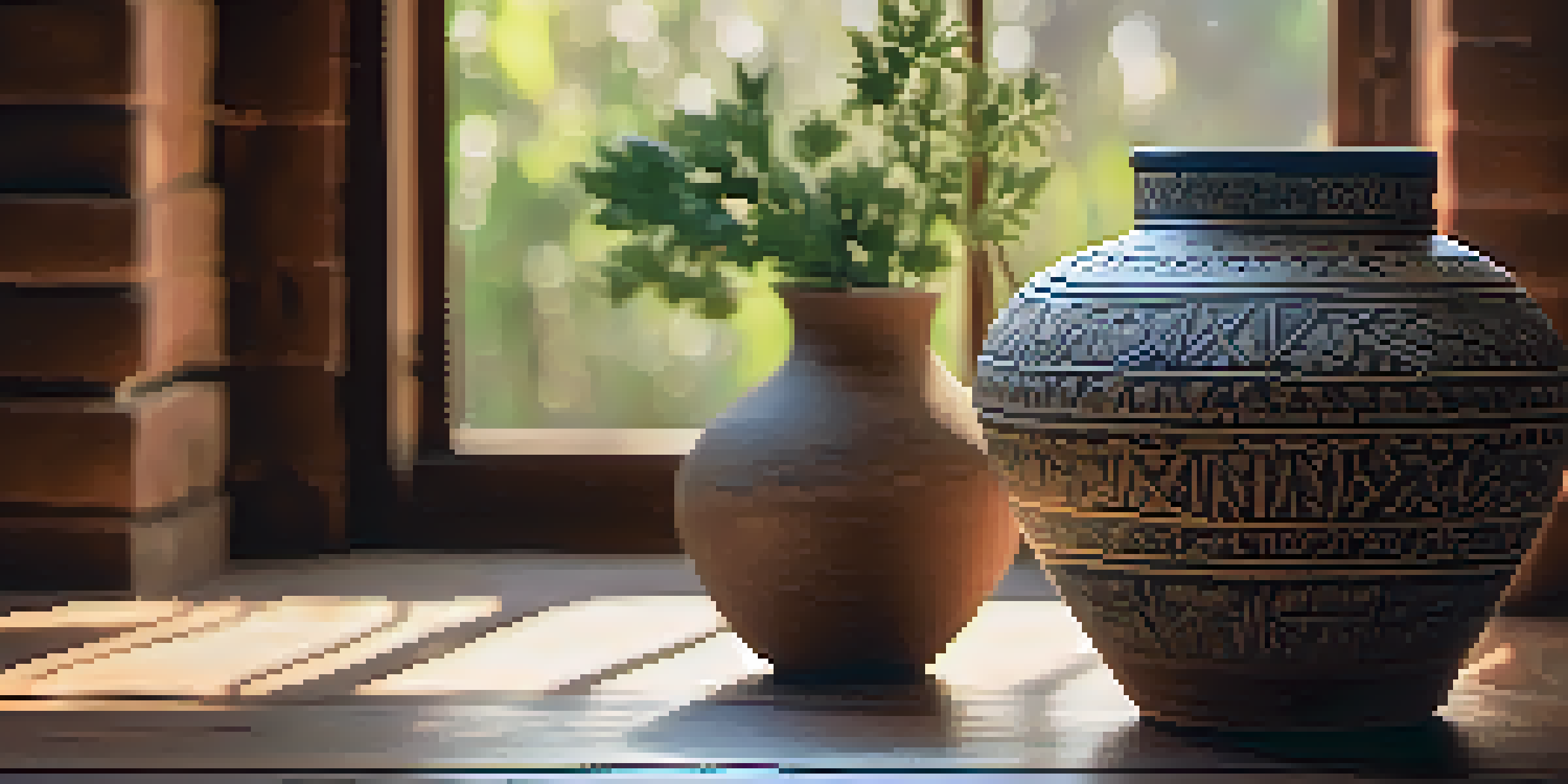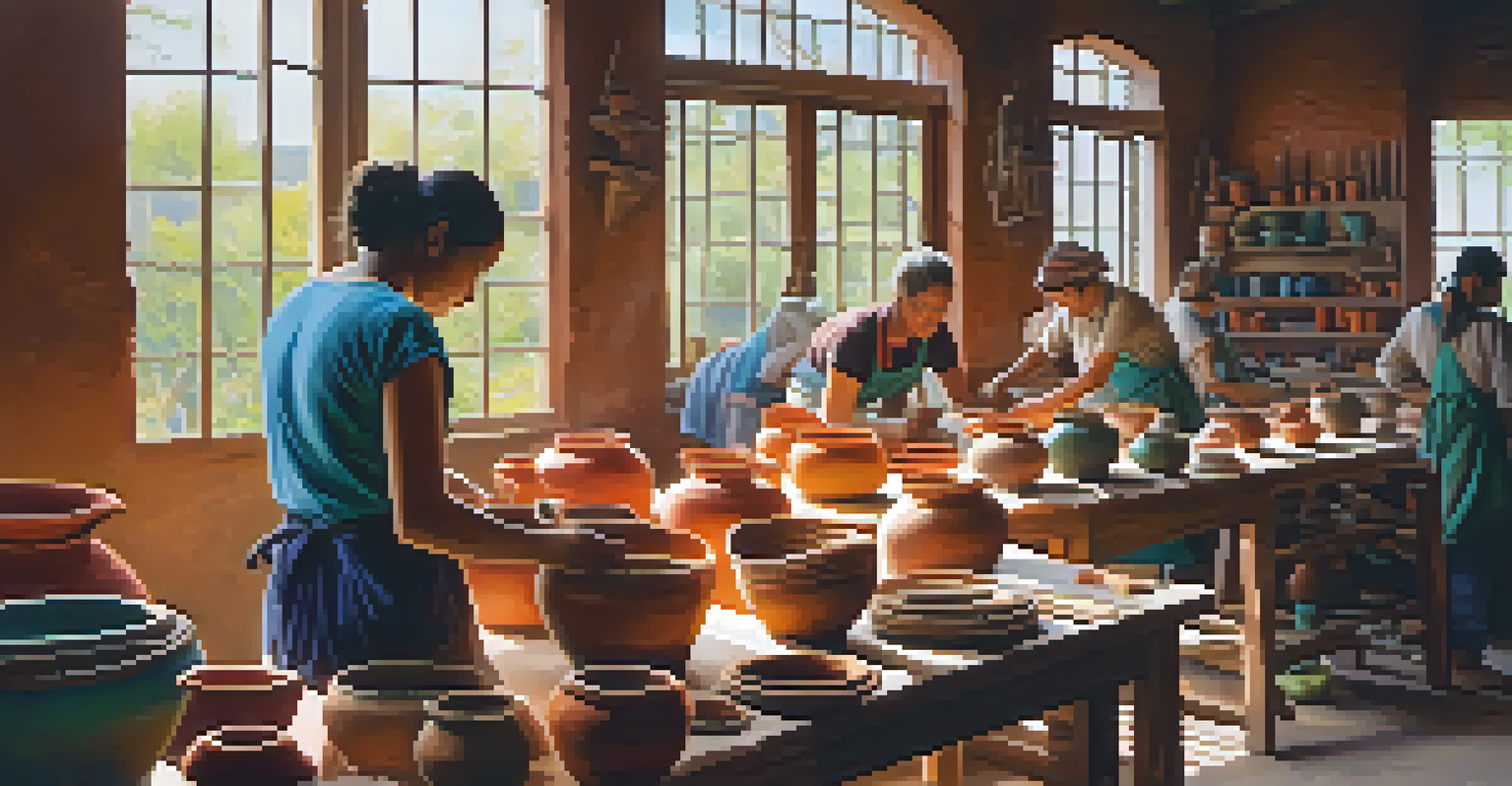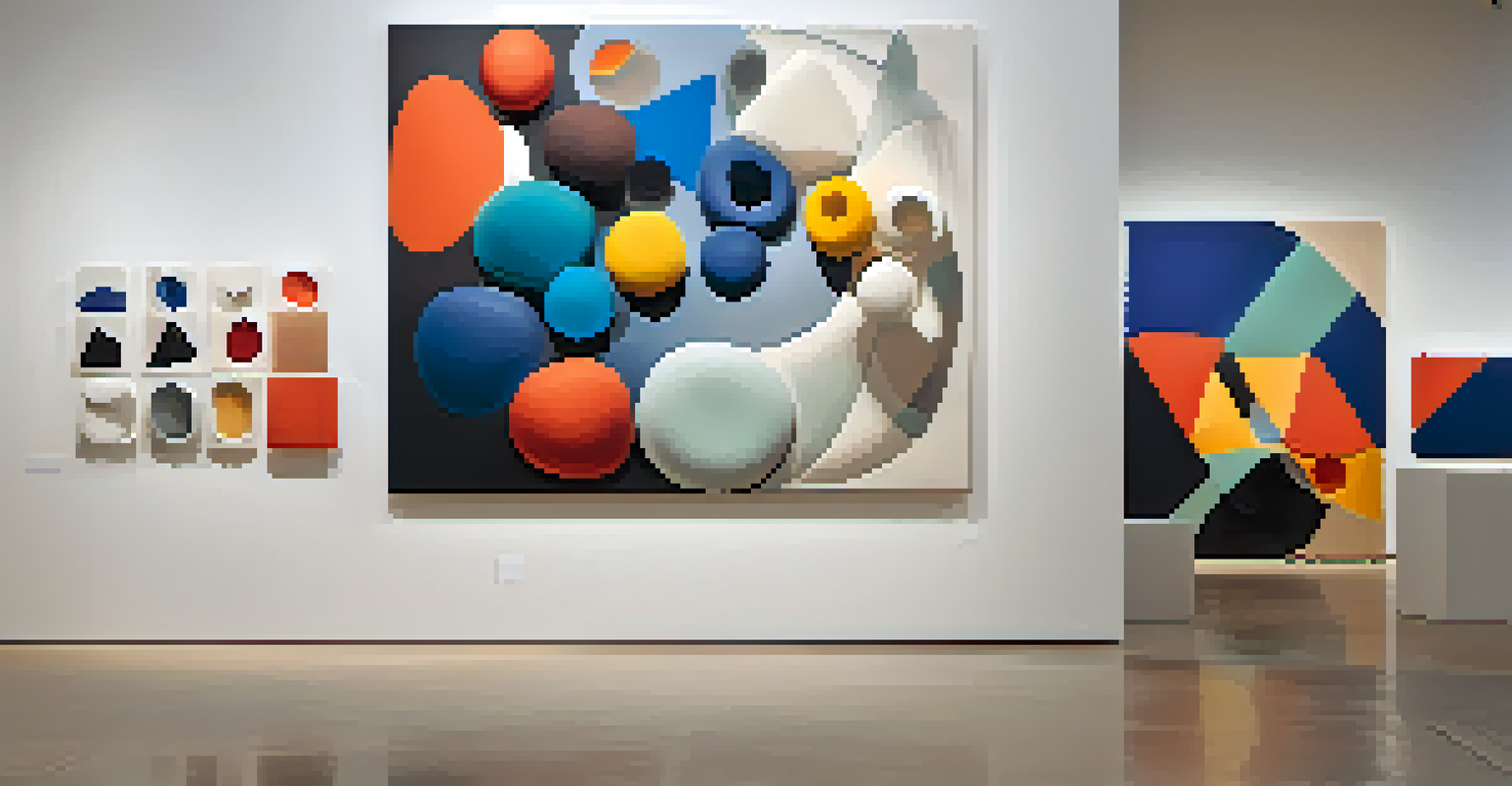Pottery and Ceramics in Art History: Key Movements Explained

The Origins of Pottery: A Journey Through Time
Pottery has been a crucial part of human civilization for thousands of years, dating back to around 29,000 BCE. Early examples found in Europe showcase the ingenuity of our ancestors as they crafted vessels for storage and cooking. This simple act of creating clay objects marked the beginning of not just functional art, but also a means of cultural expression.
Pottery is the most ancient and universal of the arts. It is the art of the people, for the people, and by the people.
As societies evolved, so did pottery techniques and styles. The Neolithic period, for instance, saw the emergence of decorative pottery, with intricate designs that reflected the beliefs and practices of the time. This transformation signifies how pottery became more than just practical items; they began to tell stories and represent identities.
The significance of these early pottery pieces cannot be understated. They serve as historical artifacts that provide insights into the daily lives, customs, and artistic values of ancient cultures. Understanding these origins helps us appreciate the deeper connections between art, utility, and society.
Ancient Civilizations: Pottery as Art and Utility
In ancient civilizations like Mesopotamia, Egypt, and Greece, pottery evolved into a sophisticated art form. These cultures utilized advanced techniques, such as glazing and wheel-throwing, to create both functional and decorative pieces. The intricate designs often featured symbols and motifs that conveyed religious or social significance.

Greek pottery, in particular, is renowned for its storytelling. Vases adorned with scenes from mythology and daily life not only served practical purposes but also acted as a narrative canvas. This blend of form and function illustrates how pottery became a vital medium for artistic expression in ancient societies.
Pottery's Role in Cultural Expression
Throughout history, pottery has evolved from practical utility to a significant medium for storytelling and cultural identity.
Moreover, the craftsmanship of these ancient potters laid the groundwork for future generations. Their techniques and styles influenced countless other cultures, creating a rich tapestry of ceramic art that continues to inspire artists today.
The Middle Ages: Functional Pottery in Society
During the Middle Ages, pottery shifted towards practicality, reflecting the needs of everyday life. With the rise of feudalism and rural communities, simple utilitarian ware became the norm. Potters focused on creating durable items that met the demands of a more agrarian society.
Ceramics are a way of grounding oneself in a place and a time, linking us to the past while allowing us to express the present.
However, this period also saw the development of distinctive regional styles. For instance, the famous tin-glazed pottery from the Islamic world showcased vibrant colors and intricate designs. This cross-cultural exchange enriched the pottery landscape, paving the way for new artistic expressions.
While much of the pottery from this era may not be as celebrated as its ancient predecessors, it played an essential role in domestic life. The functional nature of these pieces continues to influence modern ceramics, reminding us that art can be both beautiful and practical.
Renaissance Revival: The Intersection of Art and Craft
The Renaissance marked a significant revival of interest in the arts, including pottery and ceramics. Artists began to experiment with new styles and techniques, blending classical influences with contemporary ideas. This period saw the rise of majolica, a tin-glazed pottery that featured vibrant colors and intricate patterns.
Ceramics also became a canvas for famous artists, with figures like Bernard Leach and Pablo Picasso contributing to the medium. Their innovative approaches challenged traditional pottery norms and elevated ceramics to fine art status. This intersection of art and craft opened doors for future exploration in the medium.
Innovation Shaping Ceramic Art
Each historical period, from the Renaissance to Modernism, has introduced new techniques and artistic approaches, transforming ceramics into a respected art form.
Furthermore, the Renaissance emphasized the importance of individual expression. Potters began to sign their work, signaling a shift towards recognizing ceramics as a legitimate art form. This newfound appreciation paved the way for future movements that would continue to redefine pottery and ceramics.
Modernism: Breaking Boundaries in Ceramics
The Modernist movement of the late 19th and early 20th centuries revolutionized pottery and ceramics, challenging traditional forms and conventions. Artists sought to break free from historical restraints, embracing abstraction and experimentation. This shift allowed potters to explore new materials and techniques, leading to innovative designs.
Notable figures like Lucie Rie and Hans Coper emerged during this time, blending function with artistic expression. Their works defied traditional pottery norms, focusing on the beauty of form and texture. This emphasis on individuality and experimentation encouraged a new generation of ceramic artists to explore their creativity.
Modernism ultimately transformed ceramics into a respected art form, paving the way for contemporary practices. The legacy of this movement continues to inspire potters today, emphasizing the importance of innovation in the realm of ceramics.
Contemporary Ceramics: A Fusion of Tradition and Innovation
Contemporary ceramics reflect a diverse landscape where traditional techniques meet modern influences. Artists today often blend age-old methods with innovative technologies, creating unique pieces that resonate with contemporary audiences. This fusion allows for endless possibilities in design and function.
Moreover, themes of identity, culture, and environmental consciousness play a significant role in contemporary ceramic art. Many artists use their work to address social issues, making statements about sustainability and the human experience. This approach not only revitalizes the medium but also engages viewers on a deeper level.
Global Exchange Enriches Pottery
The movement of ceramic styles and techniques across cultures highlights the interconnectedness of artistic practices and the ongoing dialogue that shapes contemporary ceramics.
As we explore contemporary ceramics, we see a vibrant community of artists pushing boundaries and redefining what pottery can be. This ongoing evolution ensures that ceramics remain a dynamic and relevant part of the art world, inviting new generations to participate in its rich history.
The Global Influence of Pottery: Cultural Exchange
Throughout history, pottery has served as a medium for cultural exchange across the globe. As trade routes expanded, so did the movement of ceramic styles and techniques. This cross-pollination enriched various cultures, leading to the development of unique pottery traditions worldwide.
For example, the influence of Chinese porcelain spread to Europe, inspiring local artisans to create their versions. This desire to replicate and innovate led to the establishment of significant pottery centers, such as those in Delft and Meissen. Such exchanges highlight how interconnected our artistic practices can be.

Today, artists continue to draw inspiration from global ceramic traditions, merging styles and techniques to create truly unique works. This ongoing dialogue between cultures not only enriches the ceramic landscape but also fosters a sense of unity and shared artistic heritage.